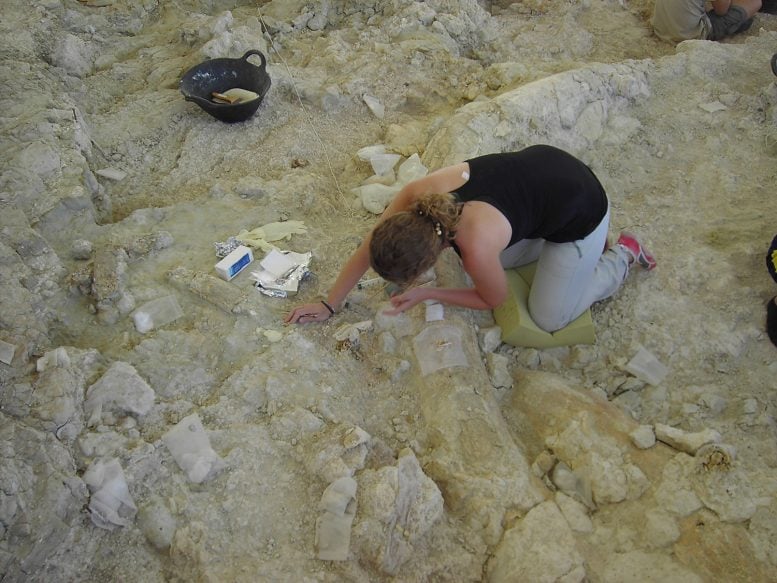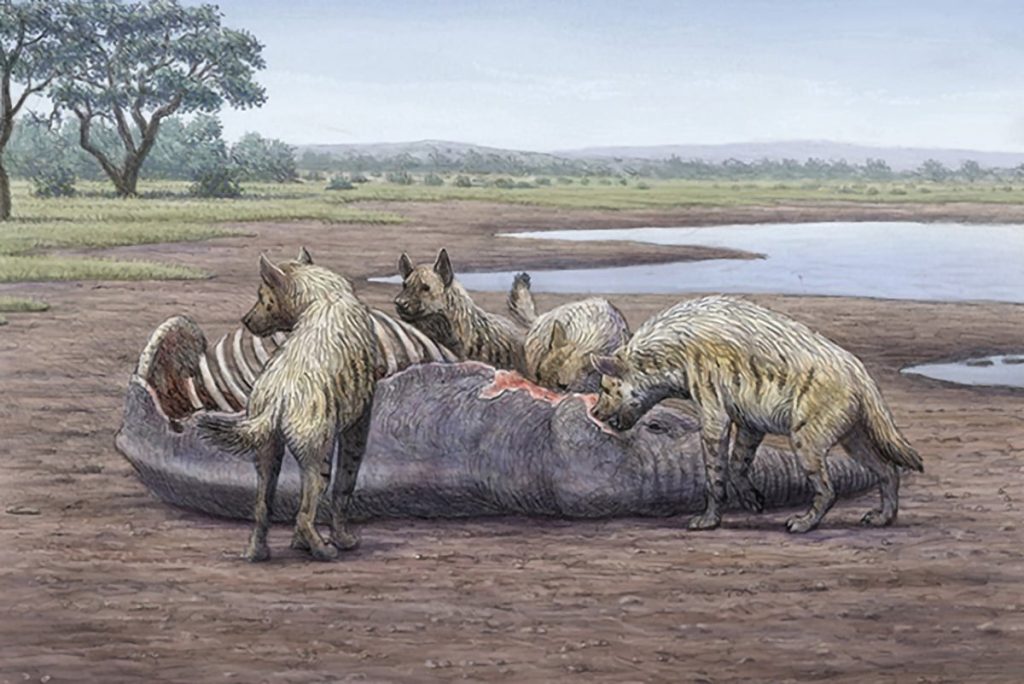Research from the University of Malaga has revealed that the Orce site served as a natural trap for large mammals during the Early Pleistocene, making it an important site for human activity and survival strategies in Western Europe. Credit: Dibujo Mauricio Antón Hienas+Mamut-Color
Located at Fuente Nueva 3, this Early Pleistocene archaeological site contains some of the oldest traces of human habitation in Western Europe.
The researchers University of Malaga The Early Pleistocene site of Orce, also known as the “elephant graveyard” because of the large number of remains of extinct elephants found there, has been discovered in an unprecedented way. seed Mammuthus meridionalis was actually hiding a natural trap in the form of quicksand.
The Fuente Nueva 3 (FN3) site, located on the northeastern edge of the Guadix Baza lowland (Granada), is one of the deposits of Orce that contains some of the oldest evidence of human presence in Western Europe, consisting of stone tools, or ancestral carved stones, dated to 1.4 million years ago.
Similarly, the site is rich in manuports (unworked stones used as striking tools to break bones and extract marrow, and possibly as thrown weapons to scare off hyenas), large mammal fossils bearing human traces related to skinning, butchering and marrow processing, and bones bearing tooth marks from scavenging carnivores.
The results of this pioneering research were recently published in Iberian Geological Journal.
Two archaeological levels
According to the study, co-led by UMA paleontology professor Pål Palmqvist and UMA geology and paleontology professor María Patrocinio Espigales, the site’s fertile soil has two distinct archaeological levels: the Lower Level (LAL) and the Upper Level (UAL). Both levels preserve a wealth of skeletal remains and stone tools. However, the former has a higher density of workshops, suggesting greater human activity at this level, while the latter preserves more remains of large herbivores, especially extinct elephants. Mammoth meridionalisThis suggests a greater involvement of giant hyenas.

The study was co-led by UMA paleontology professor Pål Palmqvist and UMA stratigraphy and paleontology professor Maria Patrocinio Espigales.
The scientists therefore analysed the composition of the faunal communities preserved in the two layers and the sedimentology, particularly the statistical differences in grain size in the fertile layers of both formations. The latter was a key aspect of the study, showing the dominance of silt and clay in the lower second to third layers, and fine and extra-fine sand in the upper fifth layer.
“These fine sand deposits, deposited near an ancient lake in the region, also contain slightly saline water, a mixture that could have acted as quicksand in which larger animals were trapped,” the UMA scientists said.
Food for Scavengers
Therefore, experts suggest that the latter layer can be interpreted as a natural quicksand trap in which large herbivores were trapped by the added weight of their limbs. The half-submerged carcasses then attracted scavengers, both hyenas and humans, who fed on them and left behind stone tool assemblages and coprolites (fossilized hyena excrement) as evidence of their presence.
The new discovery, made by the UMA researchers, represents “the first time that a natural trap with such characteristics has been described in a fossil deposit of particular interest for human evolution and represents a very important milestone towards gaining more knowledge about the survival strategies of our ancestors, the first Europeans, and their competition with large scavenging hyenas for these meat resources.”
Carrying out more detailed studies to distinguish between the upper and lower archaeological levels, as well as characterizing other important sites in the Orce region, such as Barranco León, which also provide evidence of human presence, are the next steps planned by the UMA’s scientific team, which also includes researchers from the Complutense University of Madrid and the University of Tarragona.
More than 10 years of UMA research in Orce
For decades, the University of Malaga has been investigating the site of Fuente Nueva 3. The first publication by the University of Malaga to highlight the importance of the site, in 2013, described a partial elephant skeleton surrounded by flint fragments and coprolites, proving competition between the two super scavengers for carcass resources.
Reference: “The Late Pleistocene Fuente Nueva-3 site (Guadix-Baza lowland, southeastern Spain): A hyena latrine for large herbivores built on top of a quicksand trap?” by Paul Palmqvist, Isidro Campaña, Alejandro Granados, Bienvenido Martínez Navarro, Alejandro Pérez Ramos, Guillermo Rodríguez Gómez, Antonio Guerra Mercian, Sergio Ros Montoya, María Dolores Rodríguez Ruiz, José Manuel García Aguilar, Victor Hernández, M. Patrocinio Espigares, 26 May 2024, Iberian Geological Journal.
Publication date: 10.1007/s41513-024-00241-1


